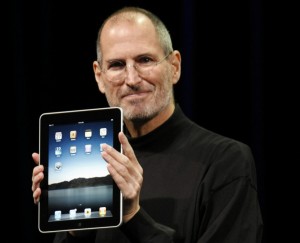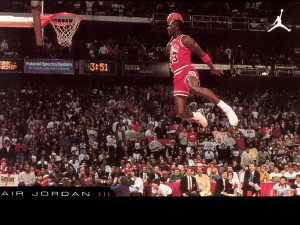Who is responsible for being the face of your brand? Making your brand personal and authentic is so important in our social-savvy culture.
In 2013, we see the big trends for brand managers as building brand experiences, integrating all digital/social/traditional tools, making your brand visual through images and packaging, redesigning your customers’ buying experience, owning inbound and outbound marketing, and for B2B, brand managers are responsible for identifying and nurturing leads – 70% of the sales process!
But who do you expect to be your brand ambassadors? Is it yourself . . . other marketing personnel . . . perhaps the sales force? Is a celebrity endorsement a possibility in the future? Which is best for your brand?
Let’s quickly explore the history, current situation and pros/cons of all brand ambassadors.
EMPLOYEES AS BRAND AMBASSADORS
In 1931, P&G reshaped the industry after executive Neil McElroy, returning from England where he studied rival Lever Bros., wrote the famous memo outlining the “brand-management system” that would change P&G forever.
AdAge describes the memo:
It was really an argument for a bigger budget and staffing for the “Promotion Department” staffed by “brand men” and requiring a legion of “assistant brand men” to meticulously rate strong and weak local markets, then develop plans to address the “sore spots” and assure “the amount of money proposed can be expected to produce results at a reasonable cost per case.” That memo would help spawn an army of analytical brand managers what would become a model and a talent source for much of marketing for decades to come.
This very successful model has allowed employees to be brand ambassadors analyzing each local market and living so close to the action they can “own” it.
Most current brand ambassadors are PR professionals, marketing teams and creative directors. And then there was Steve Jobs. He broke the mold. He was a CEO brand ambassador who became a celebrity.
What are the pros and cons of an internal brand ambassador?
Pros
- Experience in the industry/profession
- Experience with the company
- Understanding the ins-and-outs of the brand
- Knowing their audience’s spending habits
- Authenticity and loyalty to the brand
- Willing to work hard for results
- Knowing the past, present and forecasted future for the brand
Cons
- Don’t have a large following or mass personal appeal
- May be too far removed from the consumer to “think like them” or engage them
- Often more focused on results rather than creative new ways to build the brand
For those of you who are brand ambassadors, do you think a celebrity would never want your job? Think again.
CELEBRITIES AS BRAND AMBASSADORS
Back in the ‘80s and ‘90s, working with celebrities was less complicated than it is today: the celebrity would perform for a TV spot or at an event, gather his big fat check and walk away.
When I hear the words “celebrity endorsement,” my first thought is Nike, king of brand endorsements. However, Nike and Michael Jordan changed the “we pay you to perform” mentality when they collaborated on a new product for Nike—the Air Jordan athletic shoe. A new brand variant was born. That famous tie-up still communicates the power of a great celebrity/brand collaboration.
Sure, Michael Jordan also endorsed Gatorade, Wheaties and Jockey; but Air Jordan left a lasting impression. Nike allowed Michael Jordan to “own” this new brand with his name, his signature, his shoes at every game. When you think of Jordan defying gravity, arms stretched for yet another slam-dunk, you also picture his #23 red jersey and Nike Air Jordan shoes.
Speaking of celebrities “owning” the brand…that brings us to 2013.
According to the AdAge article More than a pitchman: Stars get marketing titles, brands are bringing celebrities onboard and giving them titles: Justin Timberlake is creative and musical curator for Bud Light Platinum, Alicia Keys is creative director for Blackberry and Beyoncé is PepsiCo’s global ambassador.
Now brands aren’t just featuring celebs in marketing campaigns—they’re giving stars a place in the marketing suite. The model for these tie-ups is a “partnership” anointing A-listers with lofty titles like chief creative officer, head of creative design, chief innovator and brand ambassador.
Giving celebrities these positions as “director” and “ambassador” is an attempt to make the collaboration more authentic. For example, we as an audience are rather cynical when Bob Harper says he eats only Quaker Oats for breakfast and we should too; but when Oprah says “you’ve got to read this book,” it’s an instant best-seller. Perceived authenticity is the key to current celebrity endorsements.
What are the pros and cons of a celebrity brand ambassador?
Pros
- Knowing how to engage an audience
- Instant following—those who follow the celebrity will follow the brand
- Experience with promoting his name as a brand—and succeeding!
- Creativity
- Mass appeal
Cons
- Possible mismatch of celebrity and brand
- Lack of authenticity from the celebrity
- Other endorsements by the same celebrity
- Possible refusal to do hard work to get results
- Limited loyalty and brand knowledge
- Contract comes with a large price tag
Pete Favat, chief creative officer for ad agency Arnold, made a good point: “If brands are [hiring celebrities] for PR buzz, it’s a stupid idea. No one cares who the creative director is as long as the work is great.”
So, which type of brand ambassador is right for you? Who will you empower to build your brand, engage your audience and make a lasting impression?
Whether you choose an internal brand ambassador or celebrity creative director, it’s all about who can get the job done creatively and authentically. Best wishes for GREAT brand work!









